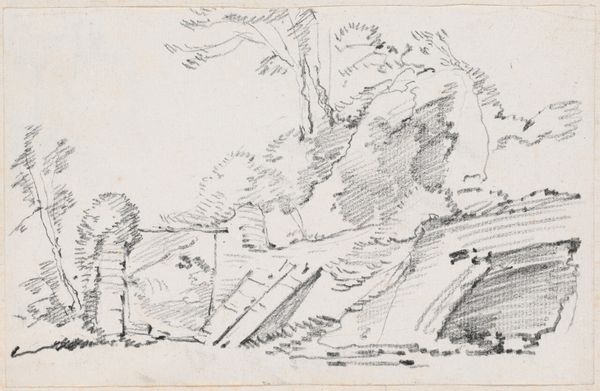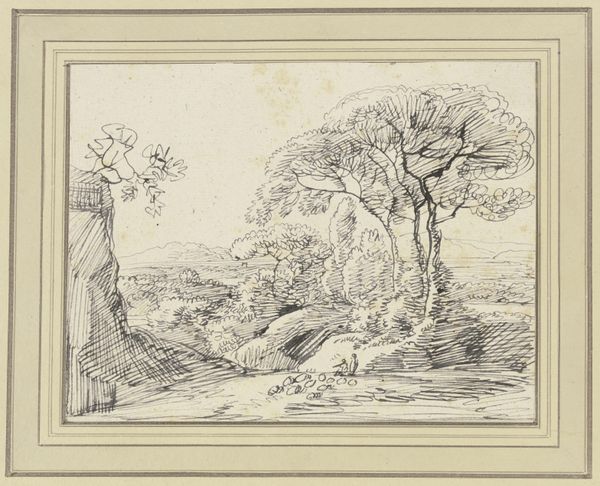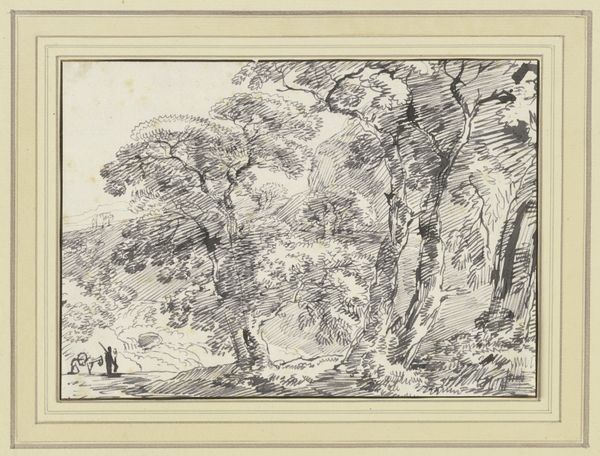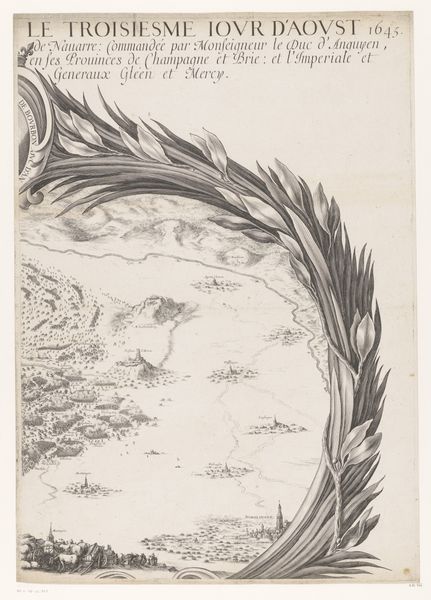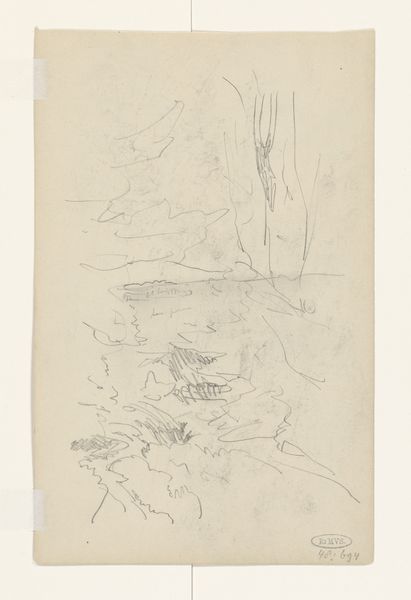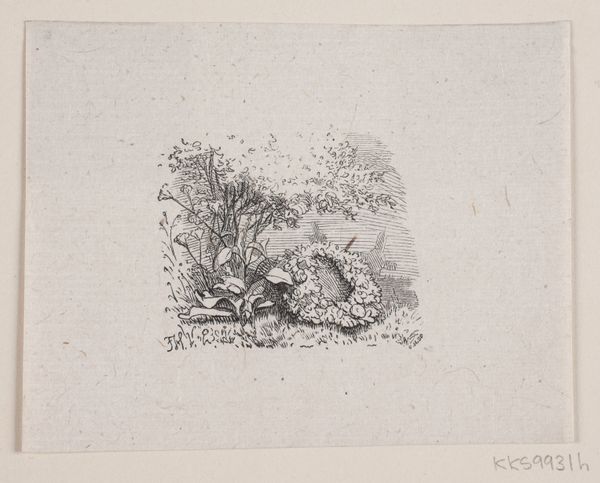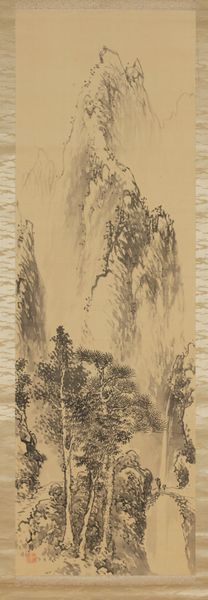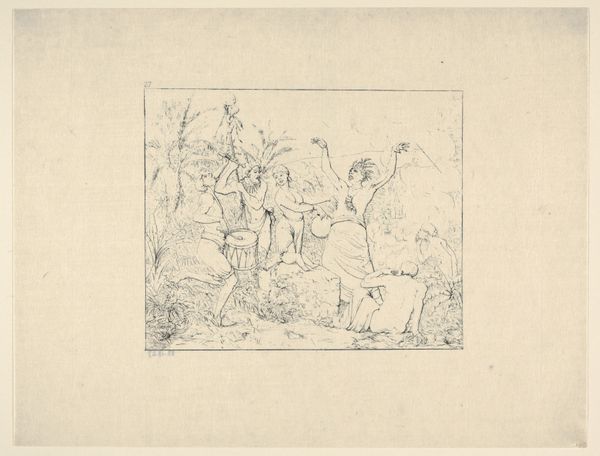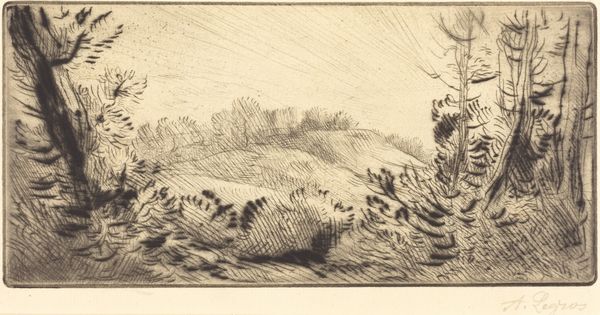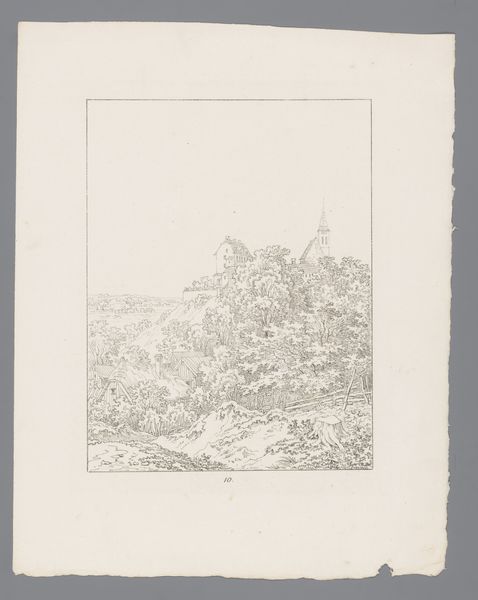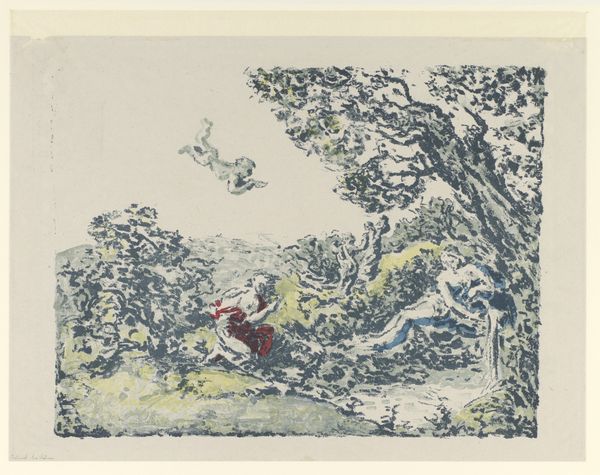
drawing, ink, pen
#
drawing
#
pen sketch
#
landscape
#
figuration
#
ink
#
line
#
pen
Dimensions: 147 mm (height) x 224 mm (width) (bladmaal)
Curator: Niels Skovgaard's "Forarbejde til 'Lysabild'," created in 1919, offers a fascinating glimpse into the artist's process. It's an ink drawing, primarily a pen sketch, currently held here at the SMK. Editor: My first impression is one of quiet contemplation, almost melancholic. The figure, rendered in such precise lines, is both immersed in nature and yet seems separate from it. It’s a solitary experience, framed by this meticulously crafted scene. Curator: Exactly. And that separation might stem from the artistic labour involved. Notice how the density of the linework in the foliage contrasts with the open sky. It speaks to a calculated process, hours spent rendering the tangible world with ink on paper. There’s a deliberate manipulation of materials at play. Editor: That deliberate manipulation is exactly what gets me thinking about who this figure might represent, and what they might be seeing. Is it a moment of connection, or a moment of observation from the outside looking in? Skovgaard produced this just after WWI, which couldn’t have failed to have marked him. Curator: That's a crucial point. Post-war Denmark saw significant social shifts and anxieties, reflecting broader European sentiments. It raises interesting questions about the purpose of art making in times of crises: to critique society or perhaps find escape. What is art meant to do, what is it even for, and for whom? The ink and the paper were both rationed during the war… Editor: Absolutely, but art making and art supplies become the very definition of luxury at times like these. I wonder how this work reflects, then, on social hierarchy and notions of belonging or exclusion during the reconstruction years in Denmark? Does that figure represent some of those left behind? Curator: It is powerful to view this drawing as a document of a specific moment in history and an indication of material hardship; not just as a precursor to a "finished" painting. It gives this preliminary work its own identity. Editor: Indeed. By situating this “preliminary work” in the turbulent, but changing times, the labor, the materials become markers for identity and invite questions about agency that push the traditional view of “art.” The choice of medium is never neutral. Curator: A poignant reminder that the means of artistic production are deeply entwined with historical context. I will think more on it, I will view all preliminary art very differently from now on. Thank you. Editor: Thank you! I'm left wondering about how artistic representation, even in its nascent stages, is inherently intertwined with our individual and collective narratives.
Comments
No comments
Be the first to comment and join the conversation on the ultimate creative platform.

